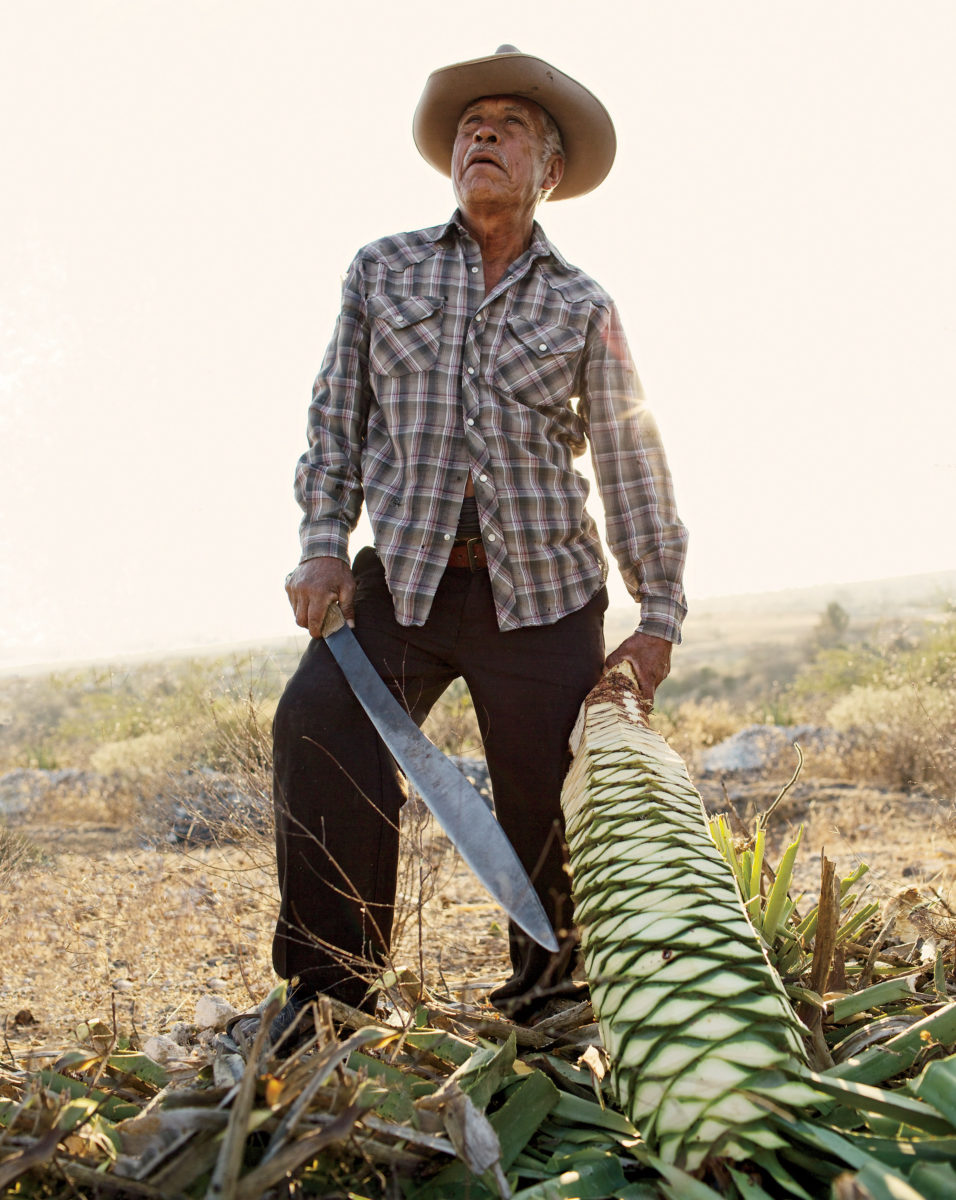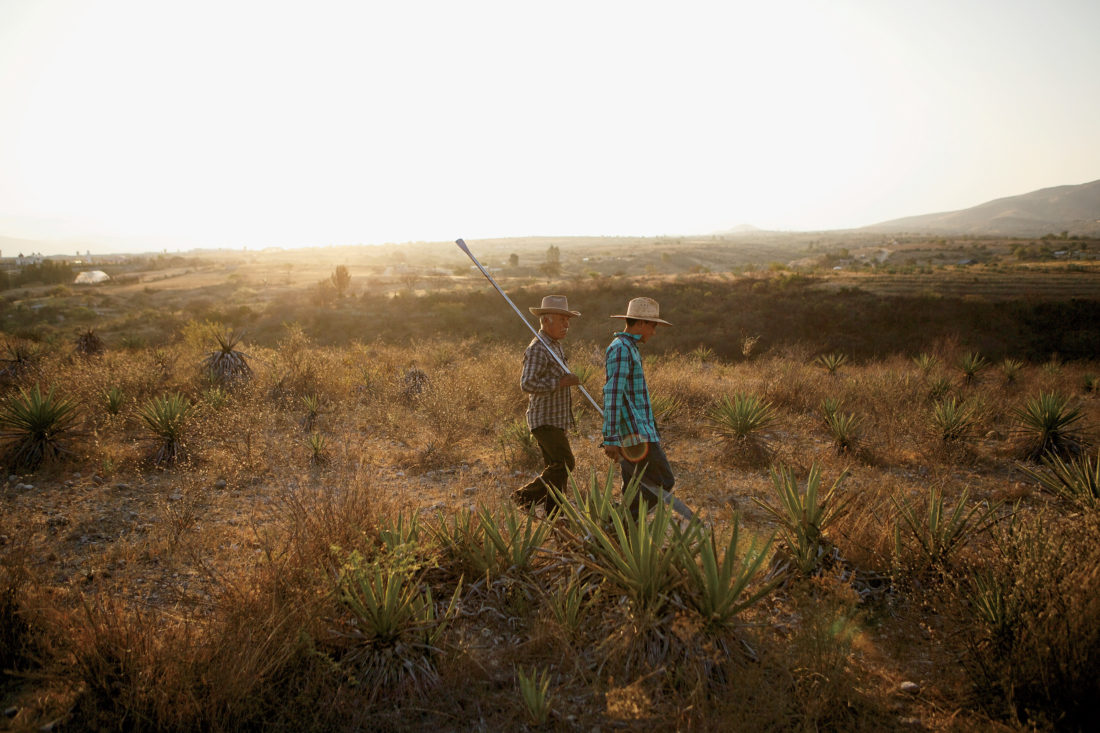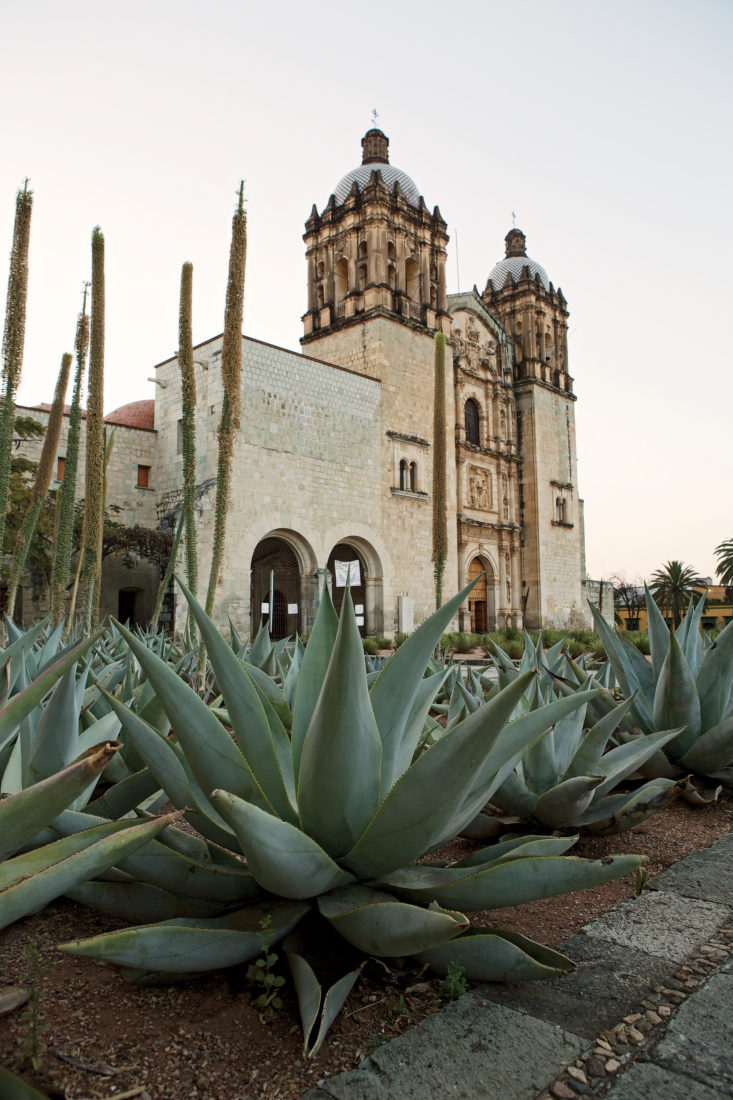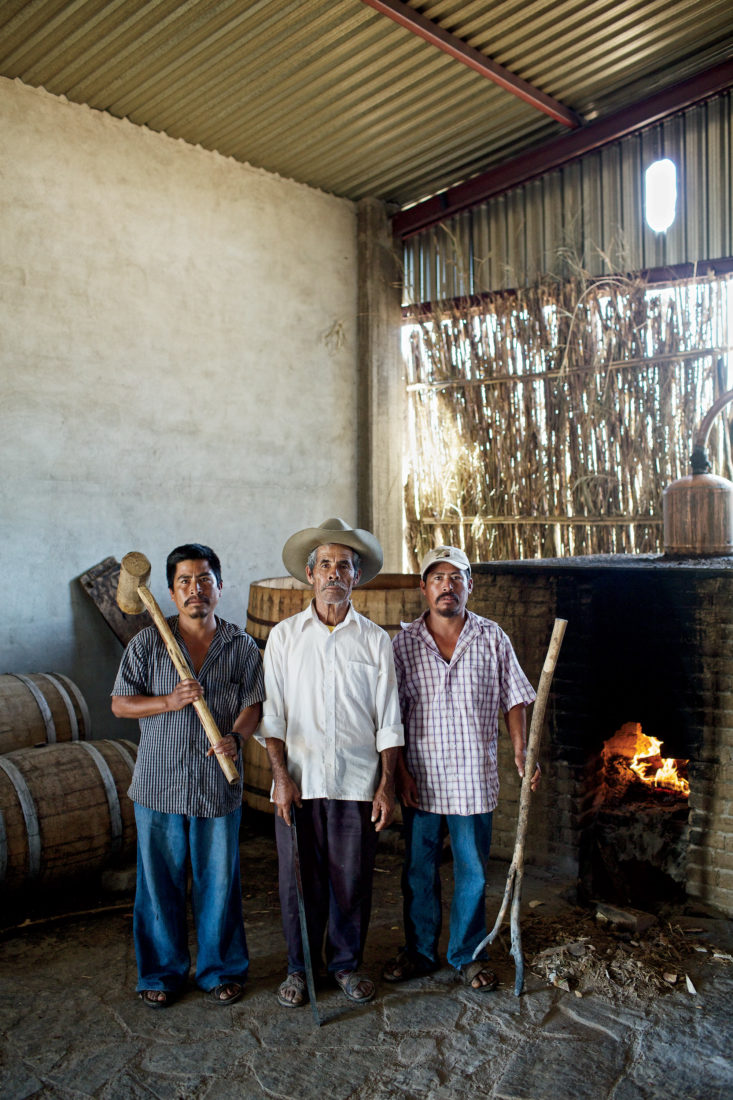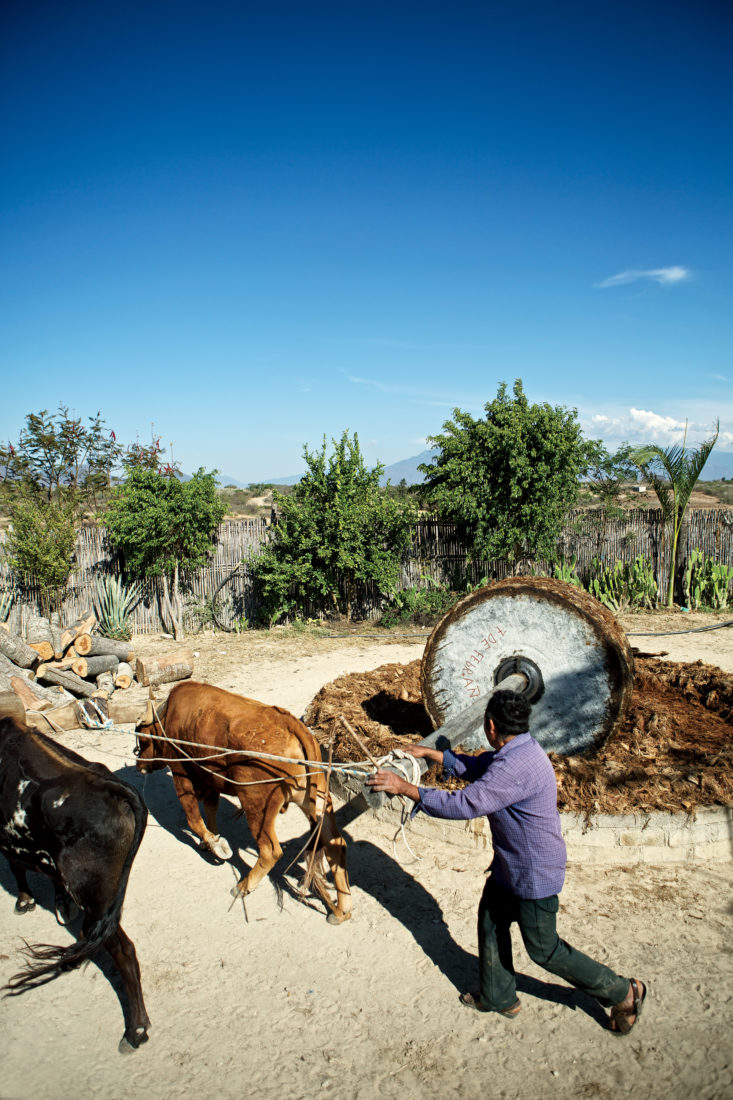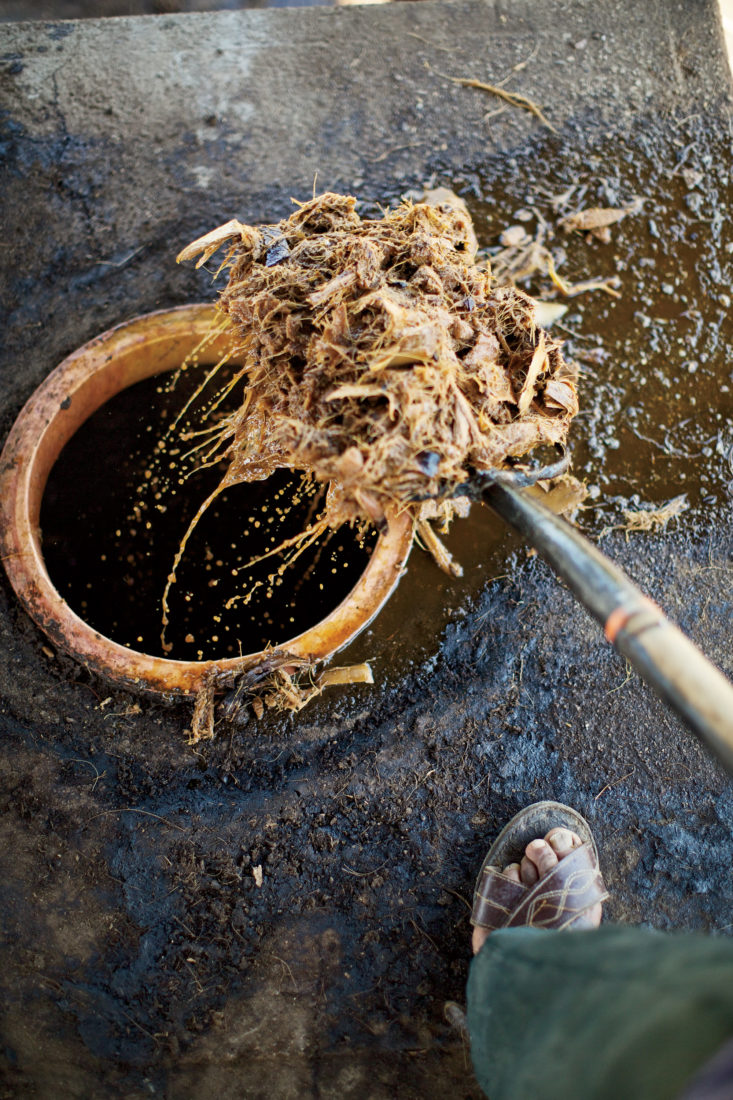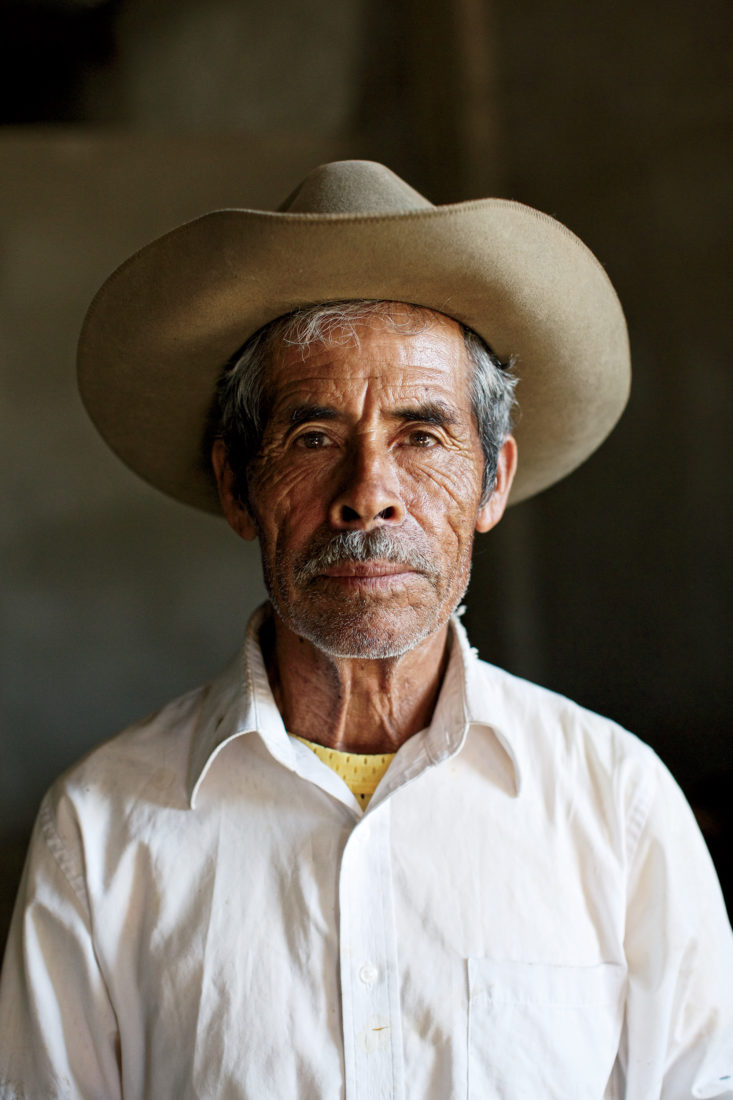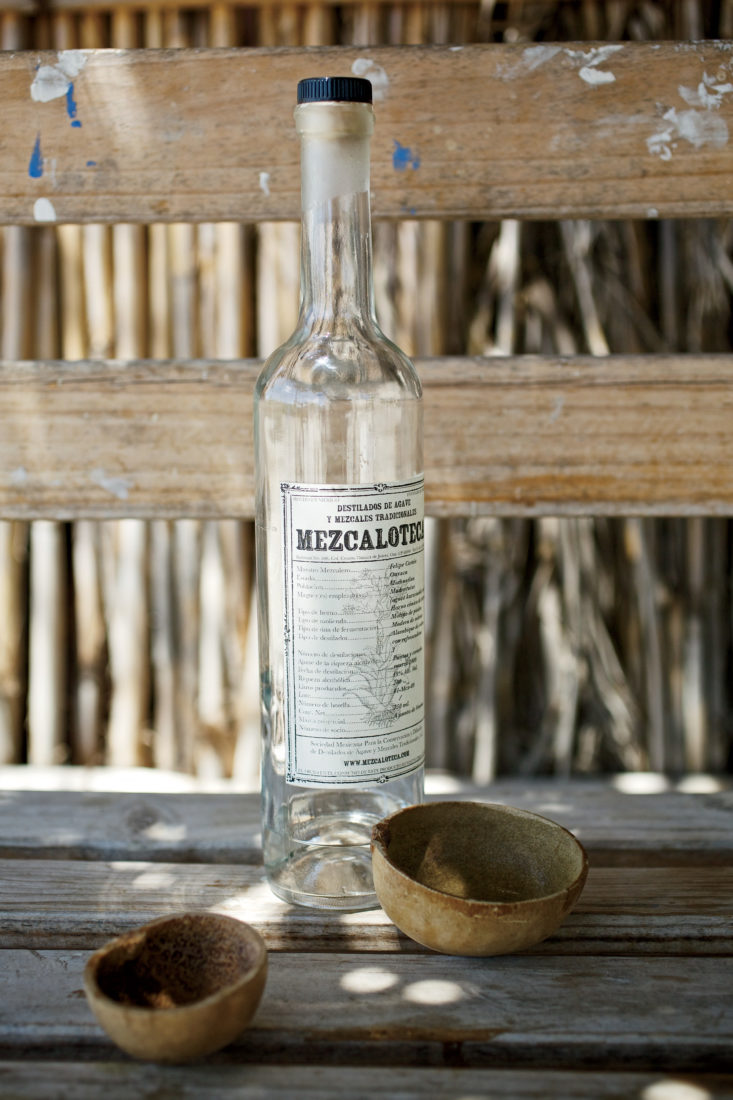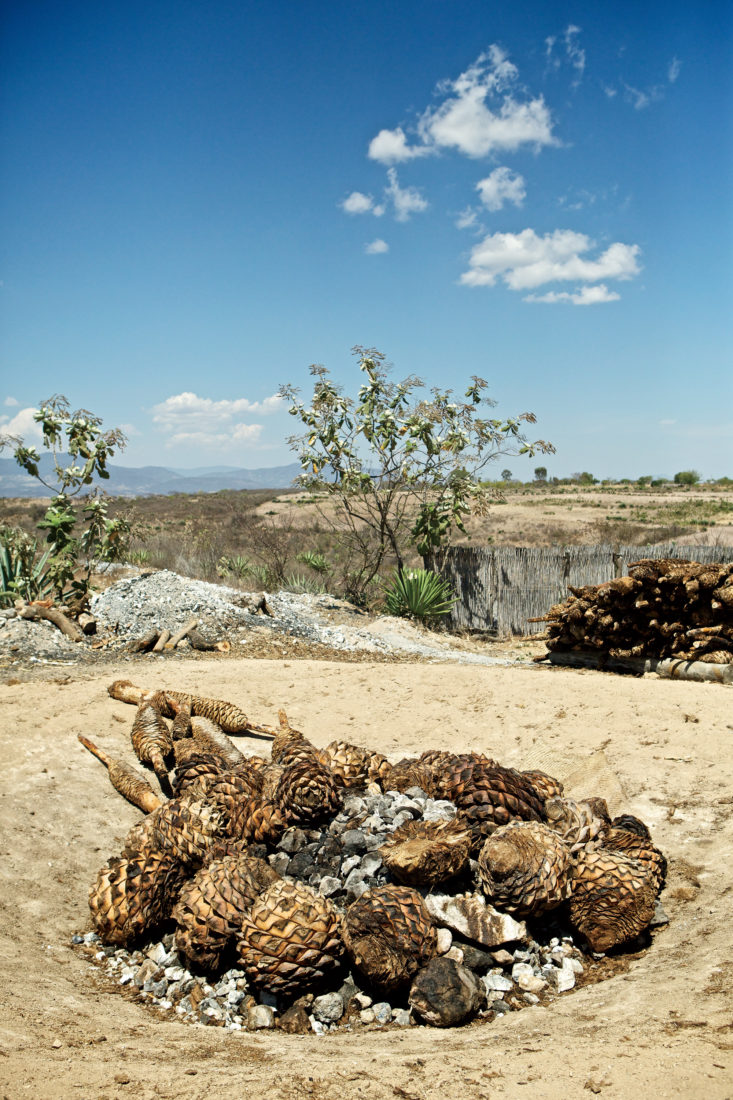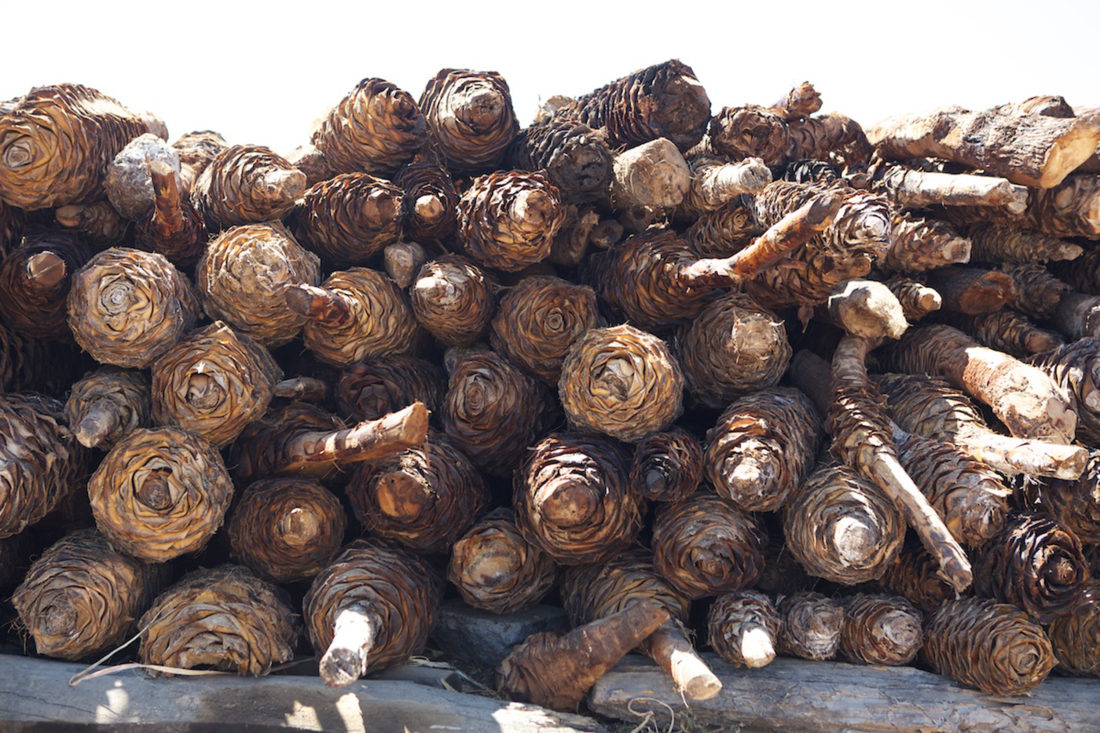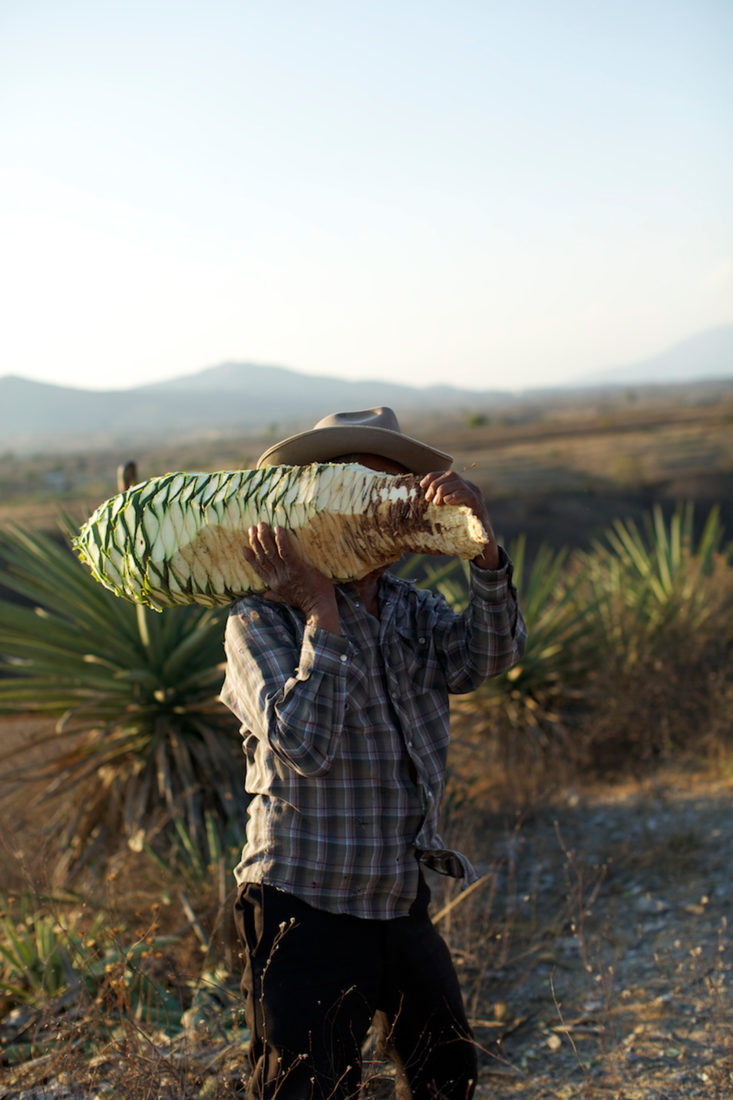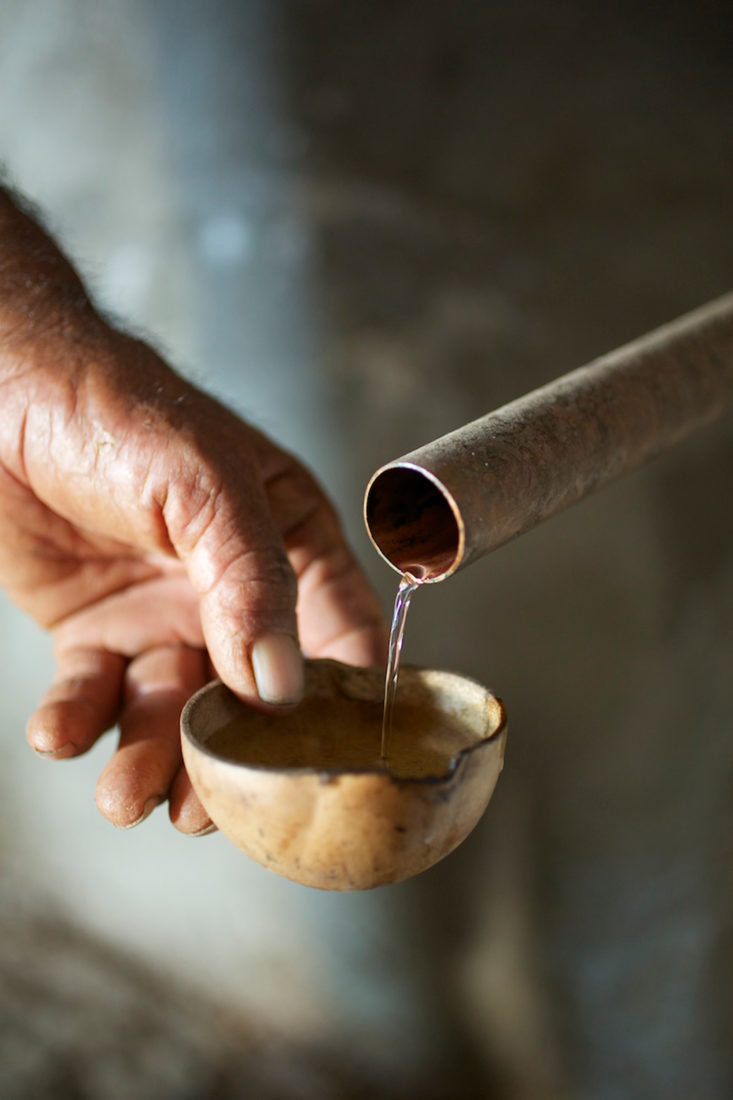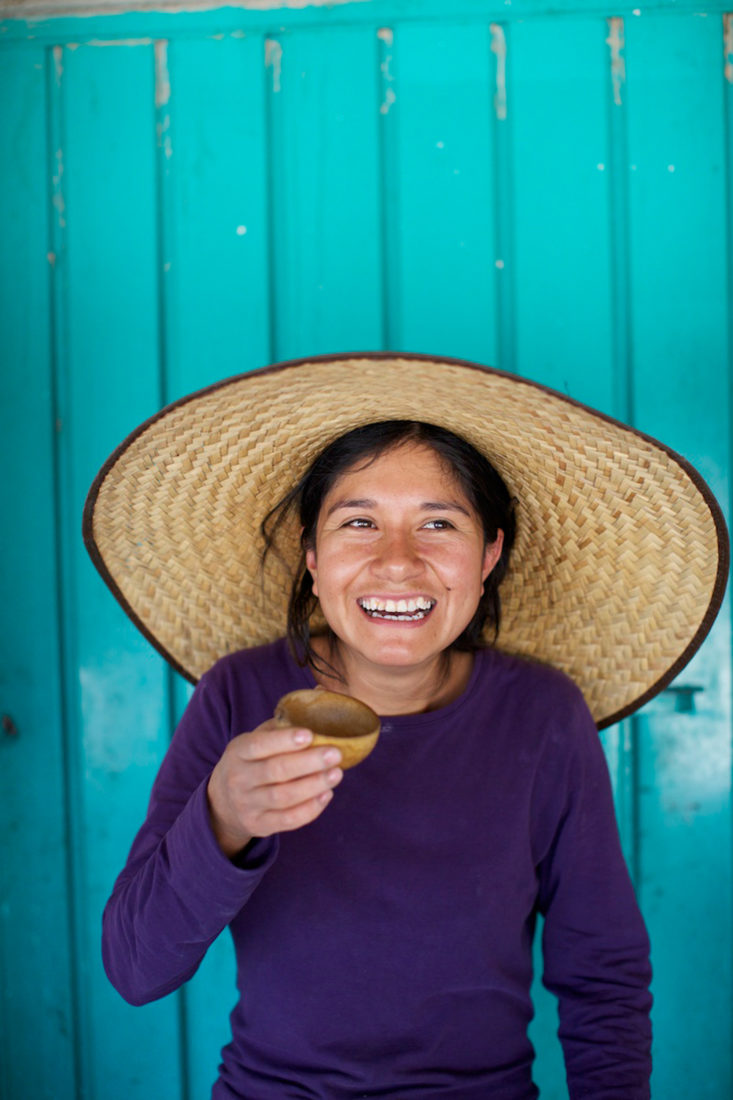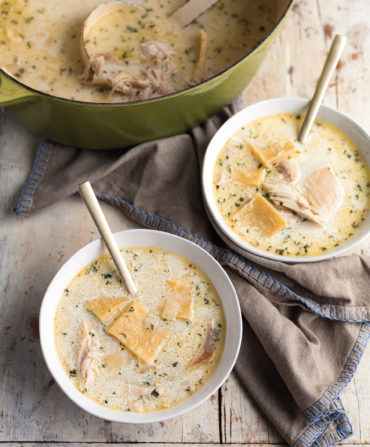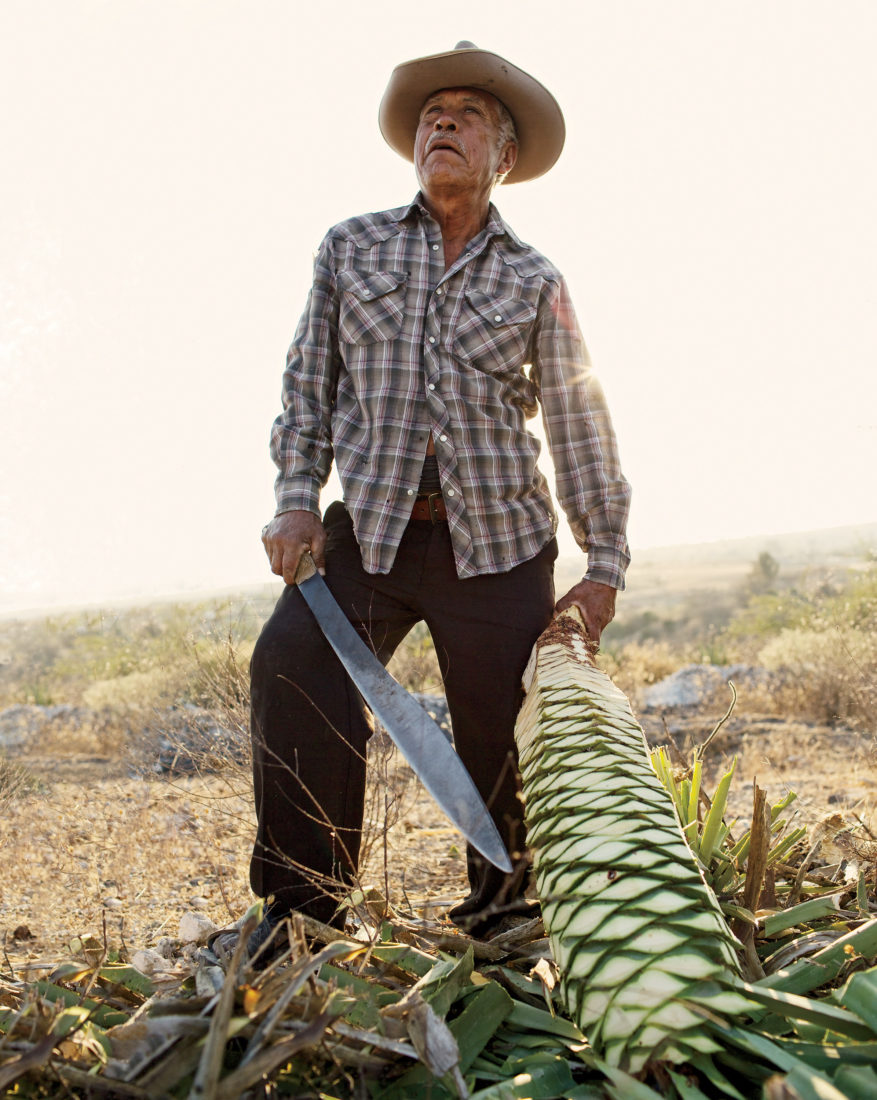
Felipe Cortés, a longtime maestro mezcalero, harvests an agave, or maguey, plant in the first step of an age-old process.
Photo: Jody Horton

Some mezcaleros pound the roasted maguey with a wooden mallet to loosen the caramelized fivers before fermentation.
Photo: Jody Horton
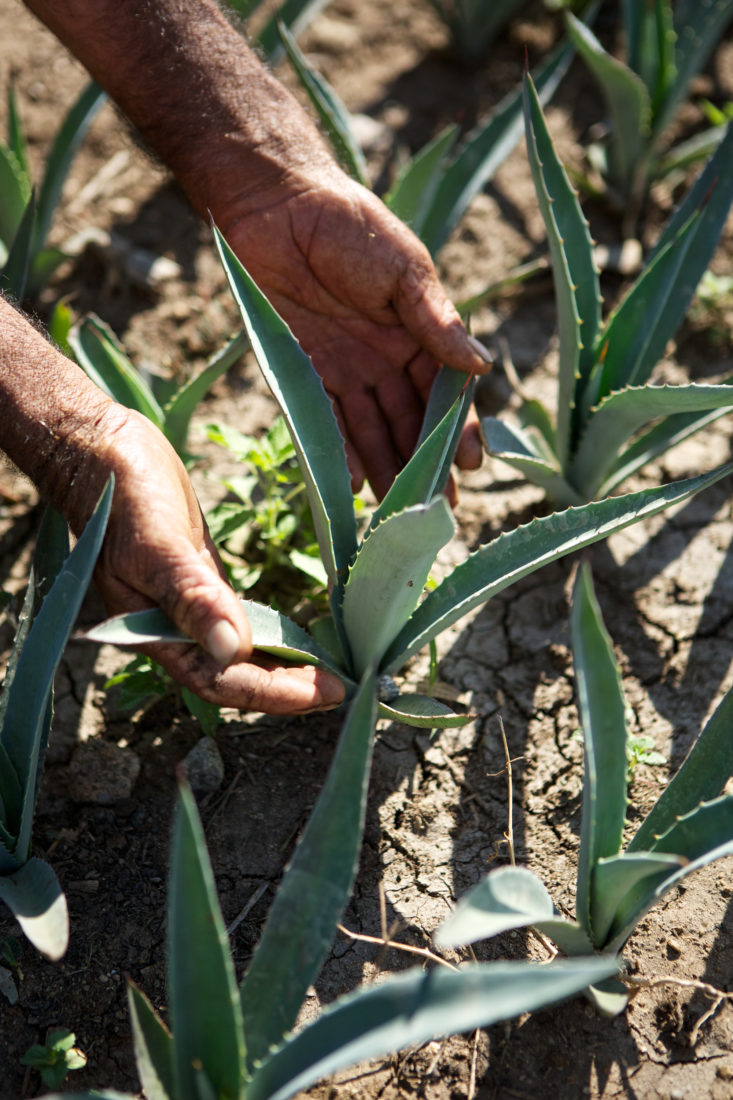
Some Mezcaleros cultivate their own mezcal plants, to ensure future supply.
Photo: Jody Horton
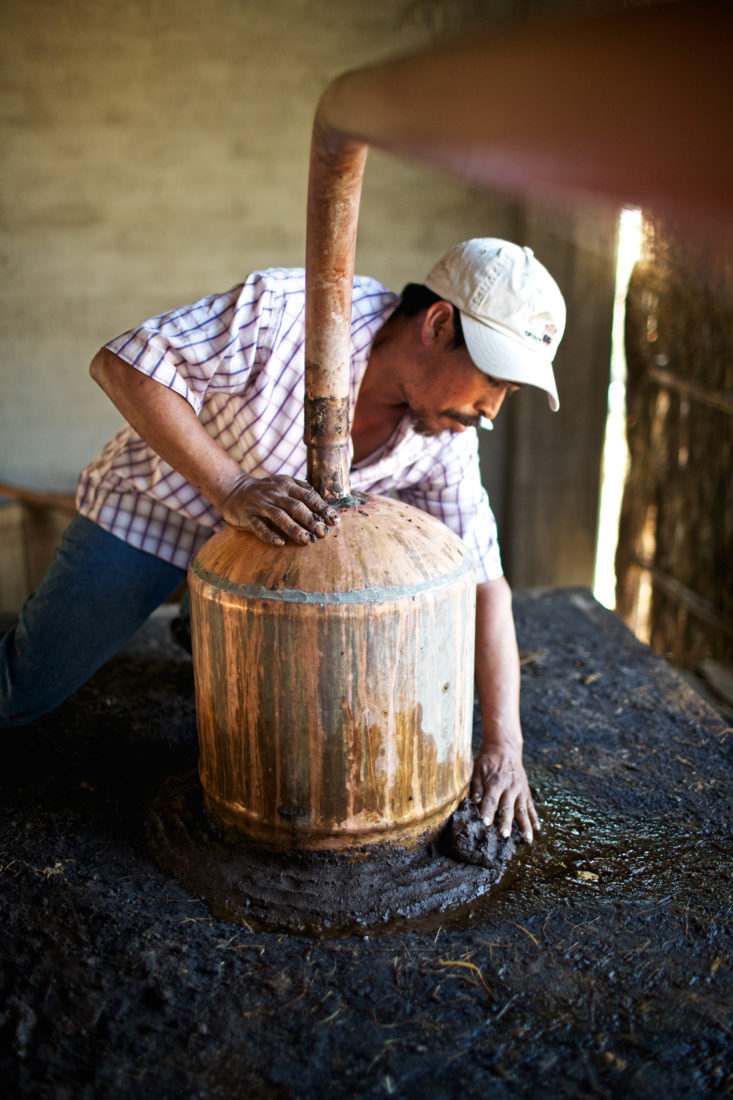
A copper still cap is sealed with cloth strips soaked in mud and stringy agave pulp, called bagazo.
Photo: Jody Horton
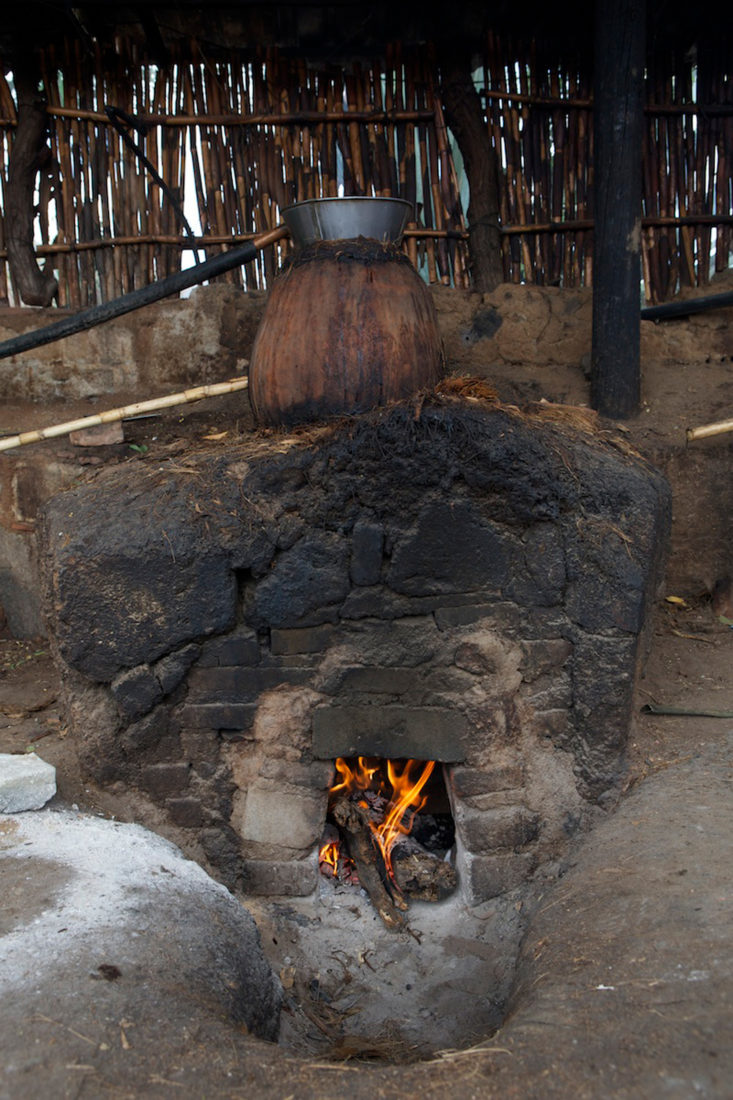
After completing the first distillation, it will be distilled again for an even more pure and high-alcohol spirit.
Photo: Jody Horton


